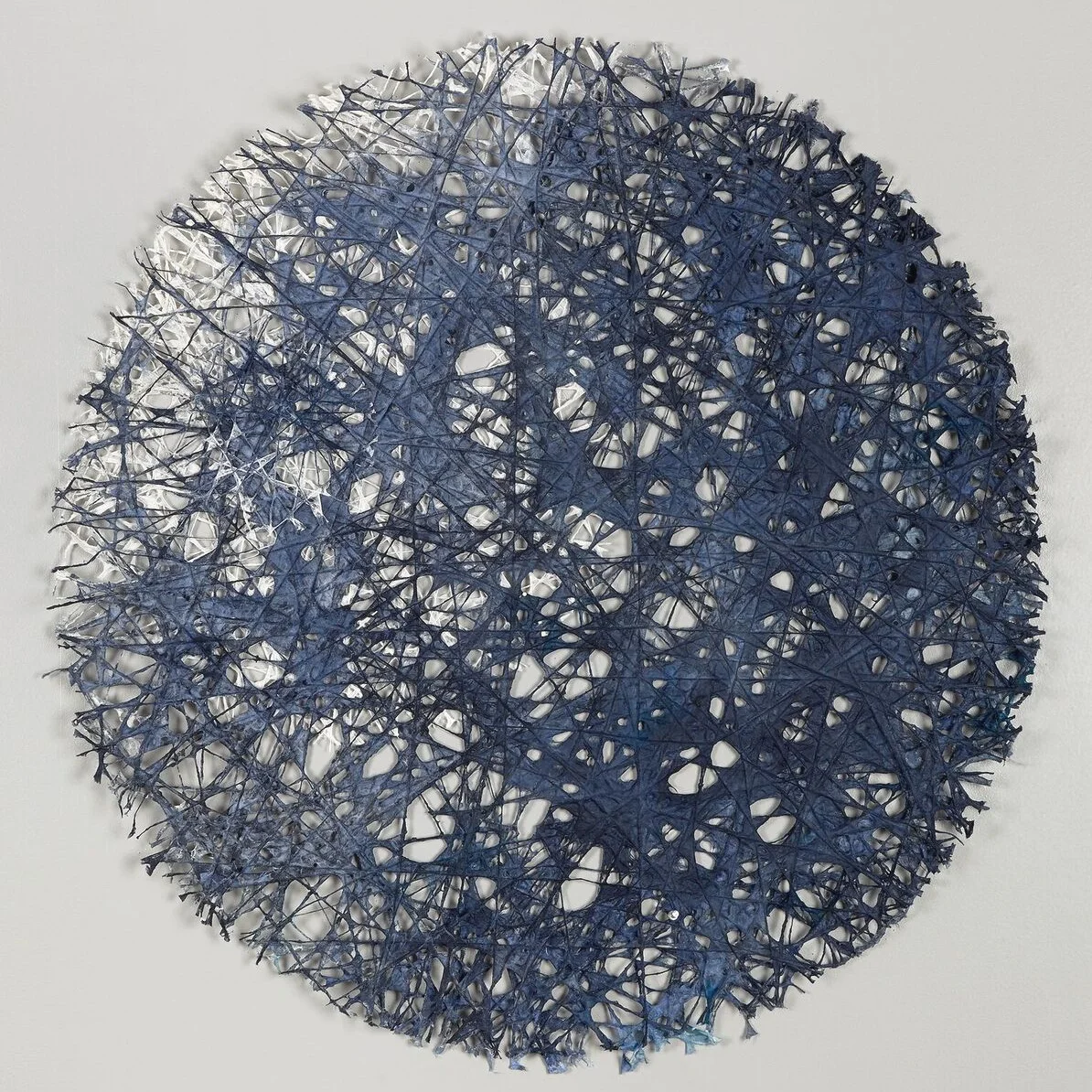The Million-Petaled Flower of Being Here | Howard el-Yasin
The Million-Petaled Flower of Being Here | Howard el-Yasin
Howard el-Yasin inside his Westville, New Haven studio. Photo: J. Gleisner.
Stacked on a bookshelf inside Howard el-Yasin’s Westville studio, around a dozen white cardboard boxes are labeled “banana peels.” On top of a nearby table, el-Yasin holds up something shriveled—another banana peel, once yellow and fresh, now desiccated. This peel, like those stored in the boxes, was baked in el-Yasin’s oven for close to an hour. This process gives the skin a leathery texture bringing a slight sheen to the charcoal black surface. Across the studio pinned to the wall, a small plastic bag contains a handful of gray dryer lint— “a material with integrity,” he said. For decades, el-Yasin has been collecting these types of materials—things most people would throw away—and incorporating them into his work as a visual artist.
Around age ten, el-Yasin recalls making a footstool made from found fragments of wood for his father. He can’t remember what the stool looked like, but the memory of making the object is formative, staying with him. Growing up in the same neighborhood as his current studio, el-Yasin enjoyed drawing, but he did not feel encouraged to make art, nor did he think of himself as an artist until much later.
For a City-Wide Open Studios event in the early 1990s, el-Yasin, then in his early thirties, created a series of colorful abstract monoprints. Aesthetically and conceptually removed from his recent work, these prints rekindled his interest in making art. With this body of work, el-Yasin suspects he had been exploring the formal properties of the work, without probing the critical meaning, mimicking a formalist approach to abstraction. As an undergraduate at New England College, el-Yasin had taken art classes, but outside of school, his demanding job as the manager of the Yale University Art Gallery store had drained his energy.
Howard el-Yasin, Mound (2018). Commercial dryer lint; dimensions variable. Installed at the Washington Art Association. Image courtesy of the artist.
One positive aspect of this role was that el-Yasin experienced the work of many artists up-close. In a 1992 exhibition of Eva Hesse’s work organized by Helen A. Cooper, the Holcombe T. Green Curator of American Paintings and Sculpture until 2014, el-Yasin was fascinated by the artist’s use of latex. Hesse’s unorthodox sculptures piqued el-Yasin’s desire to make “ugly work, once cited as raw work by a critic, and I embraced it.”
Enrolling in the Master of Arts in Liberal Studies program at Wesleyan University, el-Yasin began to research contemporary and pivotal black artists such as Josephine Baker. Then, in 2013 el-Yasin entered a low residency M.F.A. program at the Maryland Institute College of Art to deepen his practice. “It didn’t feel as meaningful to me to make work without knowing what I was doing,” he said.
Reading literature and learning art theory exposed him to new ways of thinking and talking about art. “I became much more attuned to conversations about identity, which is central to my work,” said el-Yasin. Today he approaches this subject obliquely, preferring his work to be open-ended, not a finite statement about his own experiences.
For his thesis project at MICA, el-Yasin and his brother drove a U-Haul van packed with garbage bags of dryer lint, which el-Yasin had collected the lint from fifteen laundromats around New Haven. This process had involved many disconnected phone calls and handfuls of confused employees. He built a ramp inside the Lazarus Gallery in Baltimore and marked the boundary of his space with black gaffer tape on the floor. During the opening night of Accumulations (2016), lint was strewn everywhere. Some of el-Yasin’s photos of this night even show people laying in the lint on the ground.
Howard el-Yasin. Image courtesy of the artist.
For a current work in progress, el-Yasin utilizes discarded objects, this time to explore the color black. On a wooden ladder in the corner of his studio, el-Yasin had arranged a selection of stuff: a tire from a toy, a binder clip, a hair pick, and a package of “Black Powder Candy,” among other items. This color is so imbued with racial energy, el-Yasin explained, but this work is about more than that. Together, the objects embody a poetic spectrum of blackness by exhibiting a full range of textures. From the crinkly skin of a plastic bag to the fine hairs of a feather boa, el-Yasin’s collection is a metaphor for the multiplicities of existence. There are endless ways to engender blackness as there are infinite ways to make a life.
For el-Yasin, growing older has brought insight into his practice. His interest in discarded and unconventional materials has remained constant. His collections of lint, banana peels, and other assorted bodily, industrial, organic, and cultural remnants are a type of reside. They exude the care of the artist and challenge viewers to question what has value and why.
All of el-Yasin’s quotes are from a conversation with the author at el-Yasin’s studio in the Westville neighborhood of New Haven, Connecticut on August 1, 2019. Read more about this commissioned project here.






